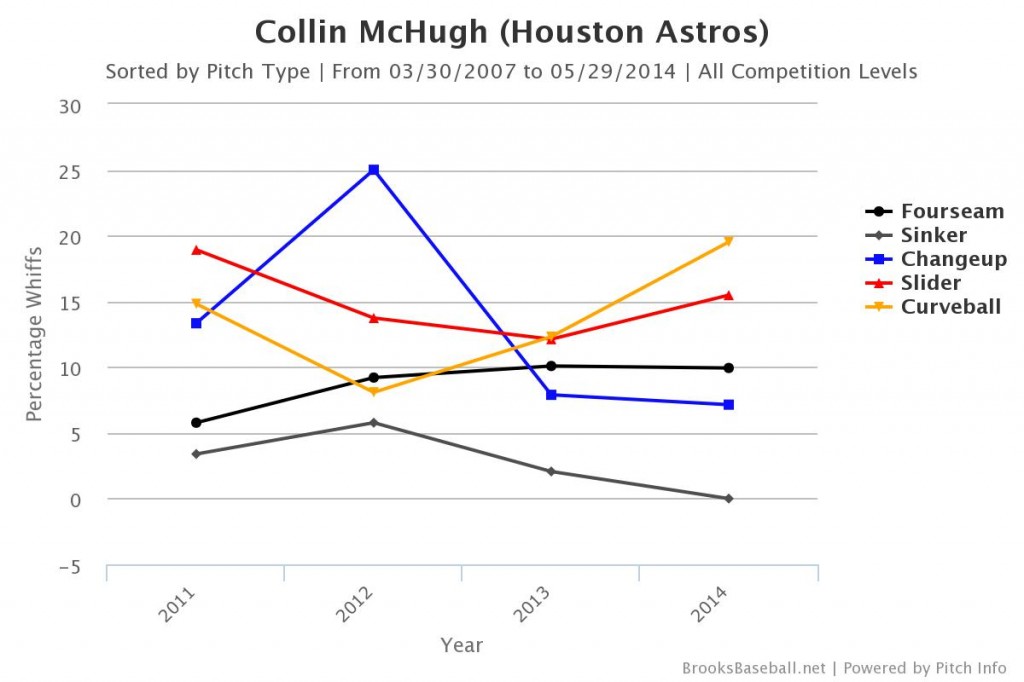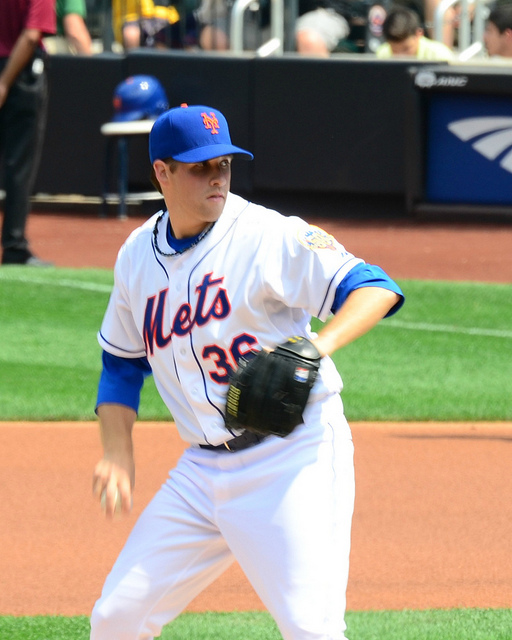Collin McHugh has given us many reasons to believe that he is a fundamentally different pitcher than he was in the first two years of his career, but there is one reason that explains why McHugh has performed so well this year and suggests, “Don’t pick up Collin McHugh.”
The curveball has been a source of impetus for McHugh.
McHugh used his curveball 15.19% of the time in 2013, but has increased his usage rate of the breaking ball by 56%—he’s thrown it 23.7% of the time in 2014.
By itself, an increase in usage doesn’t mean much, because if a pitcher starts to use a pitch more, and it was an ineffective pitch to begin with, he’s just chosen to use a bad pitch more often, and that wouldn’t suggest that the pitcher, unlike McHugh, would become a better pitcher.
However, McHugh’s curveball has become a better pitch for him.
Last year, the curveball managed to get hitters to swing and miss 12.31% of the time, which is still above the league average swSTR% of 11.1% on curveballs, but McHugh has managed to get whiffs on his curveball 19.51% of the time this year.

To put what that 19.51% whiff rate at a 23.7% usage rate in perspective, when you look at the runs above average leaders, per pitch type, for 2014, McHugh’s curveball has been the fifth most valuable curveball for all starting pitchers.
McHugh has not only used his curveball more, but his curveball has been more effective, which makes one ask, “Why has it been so much better?”
The average velocity on his curveball has gone up from 71 MPH last year to 73 MPH this year, but that still doesn’t explain the drastic increase in his swSTR%; slow curveballs—pitches that are around 72 MPH—on average, get an 11% swSTR%, while fast curveballs (think about what Justin Verlanders’ curve used to be like)—pitches around 81.5 MPH—get, on average, a 14% swSTR%.
If velocity isn’t the reason that McHugh’s swSTR% has gone up, maybe he’s gotten better movement on the pitch?

Photo by: Slgckgc
To answer that question quickly, the vertical movement on his fastball has increased but not enough to be statistically significant or explain why his whiff rate has spiked.
Summary: the velocity and movement on McHugh’s fastball don’t seem to be the reason he has had more success with the pitch this year. So if the curveball hasn’t changed, what has changed?
The teams he’s faced.
These are the teams McHugh has faced this year, along with their offensive rank against curveballs this year:
- Angels: 3rd Worst
- White Sox: 6th Worst
- Royals: 9th Worst
- Mariners: 12th Worst
- Orioles: 17th Worst
- Athletics: 26th Worst
Clearly McHugh has faced teams that match up poorly against his greatest strength, and, as a result, he’s thrown more curveballs and had more success because of it.
McHugh’s next start is, again, against the Angels, so don’t be surprised when he mows through the halo lineup, but the jury will be out on the his long term prospects until he faces more teams that are better against the curveball.
 Devin Jordan is obsessed with statistical analysis, non-fiction literature, and electronic music. If you enjoyed reading him, follow him on Twitter @devinjjordan.
Devin Jordan is obsessed with statistical analysis, non-fiction literature, and electronic music. If you enjoyed reading him, follow him on Twitter @devinjjordan.

























